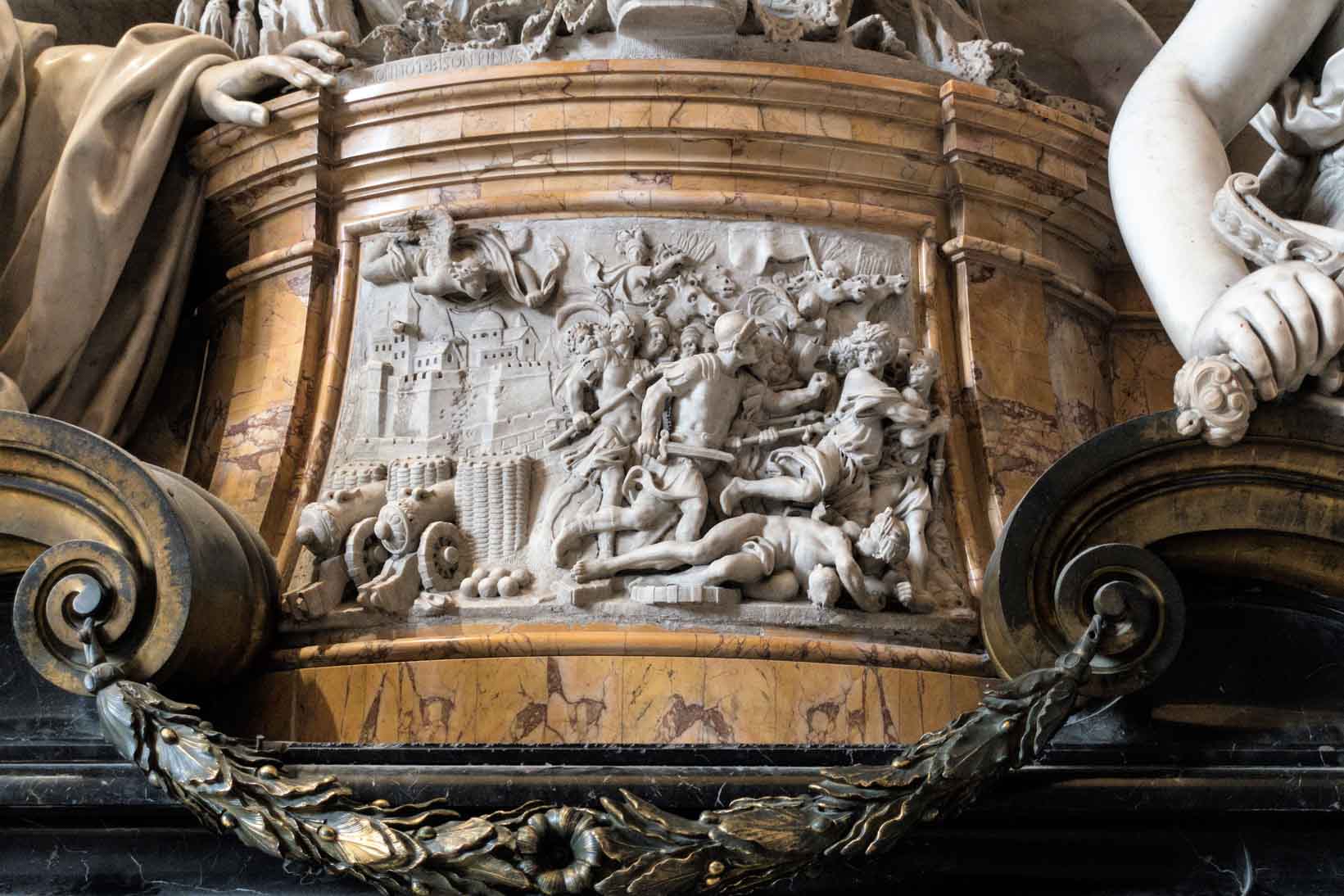
POSTACIE Popes and their associates
Pope Innocent XI (1611–1689) – a strict reformer, moralist and subduer of art

However, above all the pope cut down on all expenditures for art and culture. It should therefore, come as no surprise that this was not a good period for artists, who went unnoticed by the strict Bishop of Rome, concentrated on Church reform. Moreover, he considered art itself as something inherently shameful. This was best expressed by one of the few papal foundations – entrusting Gian Lorenzo Bernini with covering with a robe, the nude personification of Truth found on the tombstone of the previous pope, Alexander VII. The artist repaid the pope with a scathing caricature. The pope also definitely condemned the scientific theories of Copernicus, Kepler and Galileo. He did however, care for the morale of his people – he forbade gambling, French fashion, including women wearing low-cut necklines (this did not apply to prostitutes), and even traditional carnival parties.
The pope’s greatest success on the international stage was halting the Turkish invasion in Europe. Thanks to 1.5 million guldens and obtaining the Polish King John III Sobieski to his cause, the Turkish threat, which came all the way to the gates of Vienna, was averted. Thanks to this fact the pope acquired the nickname “Defender of the Christian Faith.”

Innocent XI died due to a long-lasting illness and was buried in the Basilica of San Pietro in Vaticano (1704). His nephew Livio Odescalchi funded a splendid sarcophagus with a seated and blessing figure of the pope; the base of the tombstone is decorated with a relief commemorating the victory of king Sobieski at Vienna in 1683. It is accompanied by two allegories – Faith and Courage. The designer of the tombstone was a well-known painter Carlo Maratti, who undoubtedly patterned it after the creation of the great Gian Lorenzo Bernini (the tombstone of Pope Urban VIII), while its author was the Rome-based, fashionable at that time, French artist Pierre-Étienne Monnot. The tombstone is however, filled with Rococo affectation – and it does not completely correspond with the pope’s character, which was far from earthly vain. Previously the embalmed corpse of Innocent XI was found in a glass coffin, until 2009 when it was decided that it would be moved to make room for the saint pope – John Paul II.
Due to his aesthetic lifestyle, deep faith and high moral values, which he not only preached but also practiced, Innocent XI is considered by historians (and not only Church historians) an unprecedented figure in the history of the papacy. Even in life he was treated as a saint, which was followed by a beatification in mid-XX century.
The trauma after the moral reforms, which he had introduced was so great, that after his thirteen-year long pontificate the next pope elected was Alexander VIII, who immediately brought back the old order, including nepotism. Nevertheless Pope Innocent XI set out certain standards, which would be continued by his namesake Innocent XII.
Może zainteresuje Cię również
Pope Innocent XII (1615–1700) – an exemplary shepherd and a protector of castrates
Zgodnie z art. 13 ust. 1 i ust. 2 rozporządzenia Parlamentu Europejskiego i Rady (UE) 2016/679 z 27 kwietnia 2016 r. w sprawie ochrony osób fizycznych w związku z przetwarzaniem danych osobowych i w sprawie swobodnego przepływu takich danych oraz uchylenia dyrektywy 95/46/WE (RODO), informujemy, że Administratorem Pani/Pana danych osobowych jest firma: Econ-sk GmbH, Billbrookdeich 103, 22113 Hamburg, Niemcy
Przetwarzanie Pani/Pana danych osobowych będzie się odbywać na podstawie art. 6 RODO i w celu marketingowym Administrator powołuje się na prawnie uzasadniony interes, którym jest zbieranie danych statystycznych i analizowanie ruchu na stronie internetowej. Podanie danych osobowych na stronie internetowej http://roma-nonpertutti.com/ jest dobrowolne.